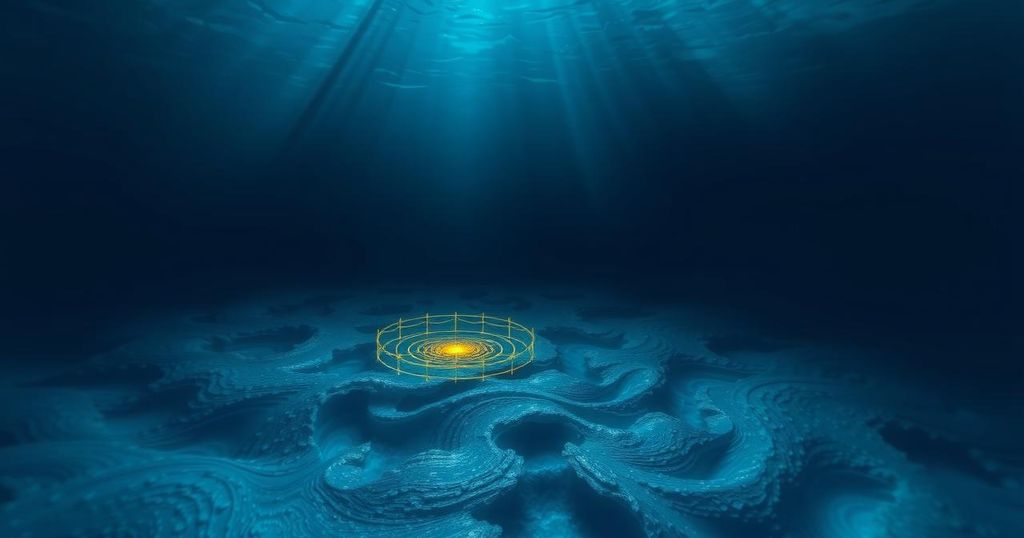Dr. Vincent Lyne has identified a bright yellow pixel in ocean floor data that could denote the location of missing Flight MH370. The Malaysian government is restarting search operations in collaboration with Ocean Infinity, guided by Lyne’s findings. Previous search undertakings have been extensive and costly, yet inconclusive. The affected families continue to seek closure as the new search effort unfolds.
Dr. Vincent Lyne has discovered a significant anomaly that may be related to the missing Malaysian Flight MH370. Using GEBCO bathymetric data, he identified a bright yellow pixel which appears to represent a potential wreckage site at Latitude 33.02°S, Longitude 100.27°E, situated in a deep crater at Broken Ridge in the Indian Ocean. This anomaly, located at a depth of 5,750 meters, calls attention to the possibility of the plane’s crash site, despite some uncertainties tied to sonar and satellite data inconsistencies.
Dr. Lyne, formerly associated with the University of Tasmania, has previously posited that the disappearance of MH370 was not an accident. He speculates that Captain Zaharie Ahmad Shah may have intentionally brought the aircraft down into the depths of Broken Ridge to prevent recovery efforts. Furthermore, he argues that the crater’s characteristics are atypical of natural seabed formations, hinting at a deliberate crash. These theories, while speculative, introduce intriguing possibilities to the unresolved mystery surrounding the aircraft’s fate.
In light of these developments, the Malaysian government has expressed its intention to recommence search operations for MH370. Transport Minister Loke Siew Fook has announced that US-based marine exploration company Ocean Infinity will lead the effort under a “no find, no fee” policy. The operation will have a reward of $70 million for successfully locating the wreckage, and will focus on an area of approximately 15,000 square kilometers in the southern Indian Ocean.
Historically, the search for MH370 has been extensive yet inconclusive. The initial search, a collaborative effort by Malaysia, China, and Australia, spanned 120,000 square kilometers and was terminated in 2017 due to insufficient results. In 2018, Ocean Infinity attempted a smaller search of 25,000 square kilometers but similarly failed to locate the wreckage. While some debris confirmed to belong to MH370 has surfaced along the coast of Africa and various Indian Ocean islands, the search efforts are considered among the most costly and drawn-out in aviation history, entailing expenditures in the hundreds of millions of pounds.
The families of the 239 individuals aboard MH370 continue to seek closure in the wake of this tragedy. Numerous relatives, particularly from China, where most passengers originated, have voiced their dissatisfaction over the lack of definitive information. In March 2014, many relatives organized protests at the Malaysian Embassy in Beijing, demanding accountability and transparency. As the renewed search proceeds and is set to last six weeks, anticipation builds regarding the significance of the anomalous yellow pixel and its potential to unveil the truth about Flight MH370’s fate.
In conclusion, Dr. Vincent Lyne’s recent findings have revitalized the investigation into MH370’s disappearance, revealing a significant anomaly in ocean data that could be pivotal in identifying the crash site. Concurrently, the Malaysian government has reinitiated search efforts with a commitment to seek answers for the families affected by this unresolved tragedy. As history has shown, previous search missions have been fraught with challenges, and the coming weeks will be critical in potentially uncovering the truth behind the ill-fated flight.
Original Source: m.economictimes.com




